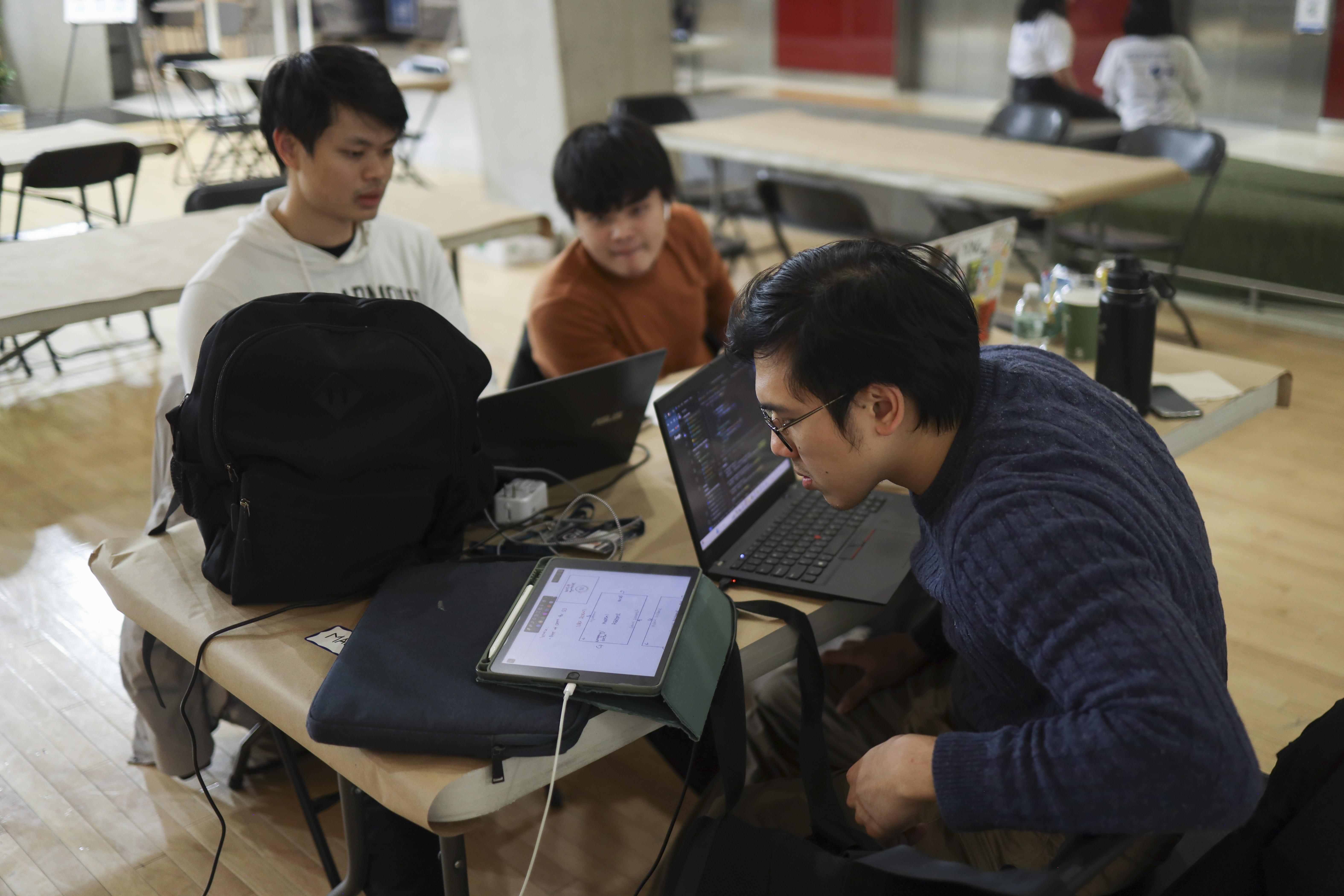Responsible design, simply termed ‘design for good,’ took center stage at the 2024 George Hacks Medical Solutions Hackathon, highlighting its pivotal role in addressing pressing societal challenges. This approach offers a holistic framework for product design, encompassing considerations of social, environmental, and economic impact. Over 24 hours, hackathon participants collaborated in teams to create working prototypes in response to healthcare-based problem statements that highlighted those three determinants of health.
Juniors Si Ming Zhou, Siah Wee Hung, and Khoo Yong Hui, all double-majors in Business and Computer Science, worked together to develop a solution to the problem statement addressing the challenges patients with disabilities face in controlling their environment and accessing information without the use of physical movement or speech. In the project “Enhancing Patient Care through Eye Gaze Tracking in Extended Reality (XR),” the team integrated advanced eye gaze tracking technologies into an innovative XR solution that improves care for these patients, earning them the hackathon’s Responsible Design Award.
Regarding why they chose this project idea, Yong Hui said, “In the context of the new and upcoming development of Metaverse/Apple Vision Pro, the problem statement involving implementing an eye gaze navigation system sparked our interest the most as we did not think such technology could be used in the healthcare industry. Additionally, the readily available eye gaze navigation package and helpful example project provided by Dr. Hurriyet Ok made us feel that this problem statement was feasible to tackle within the short span of a day.”
The annual George Hacks Medical Solutions Hackathon is now in its 7th year, and every year, the event aims to challenge student teams to contemplate social, environmental and economic determinants of health to inspire the solutions they create. To be eligible for this award, team members must have attended the Responsible Design Workshop co-hosted by George Hacks, the GW Innovation Center, and the Center for Women in Engineering.
In that interactive workshop, students were introduced to the basic principles of human-centered design and how to be socially responsible when designing their prototype. A particular concept touched upon during the workshop that Ming Zhou mentioned informed his team’s design process was the stakeholder analysis framework, which involves categorizing different stakeholders, quantifying their level/type of influence, and mapping their relationship with one another.
“This concept played a pivotal role in crafting our product and pitch as it encouraged us to think deeper about the various social, environmental, and economic impacts of our product, hence affecting our design considerations,” said Ming Zhou.
The team’s ultimate objective for the project was to improve accessibility for individuals with disabilities by designing a solution that enables them to communicate and interact with their environment more effectively. The prototype they developed is non-intrusive and uses a screen and laptop webcam to allow patients to navigate the screen by looking at its four edges.
The prototype illustrates the principles of responsible design as the team made sure to address the social, environmental, and economic impacts of their product for all stakeholders. For example, instead of employing an expensive camera, they opted for a cost-effective webcam, prioritizing affordability for hospitals without compromising the accuracy in tracking pupil movement. This conscious decision not only reduces costs but also enhances accessibility to the technology.
Moreover, the prototype’s adaptability to diverse patient needs and its ability to minimize the spread of infections by reducing the need for physical contact underscore its social and environmental benefits. Each screen allows disabled patients to perform important functions, such as calling nurses, requesting water and food, answering yes or no questions, and scrolling through entertainment channels, using only their eye movements.
“In hindsight, we believe that the three-pronged analysis we took of our product exemplified the essence of ‘Responsible Design,’ which is to think from the perspective of different stakeholders and design your product in a way that maximizes the positive value the product provides,” Wee Hung stated.
As a team, Ming Zhou, Wee Hung, and Yong Hui summarized their feelings about receiving this award, saying, “We feel really honored to receive this award, and we could not have done it without the various mentors during the hackathon that provided us with their perspective and insights. As engineers, this award motivates us to incorporate responsible design into our future products and create even better designs.”


